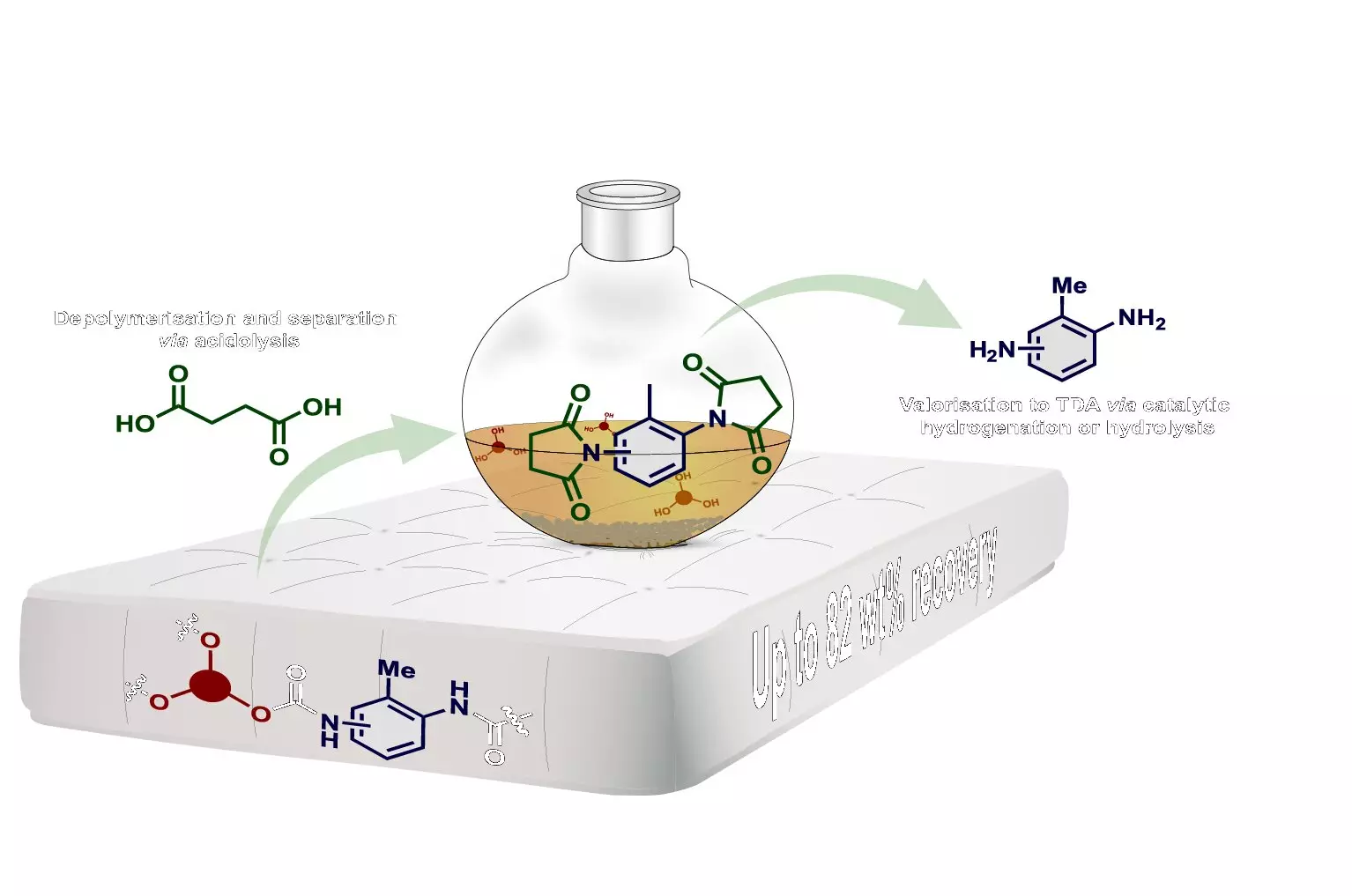Polyurethane foam, a versatile material used in a wide array of products ranging from mattresses to wind turbine blades, poses a significant environmental challenge due to the difficulties in recycling it. Most discarded polyurethane products end up being incinerated or landfilled, contributing to the already pressing issues of waste management and resource depletion. The global market for polyurethane is substantial, with volumes reaching millions of tons annually, underscoring the urgency of finding sustainable recycling solutions.
Researchers at Aarhus University have developed a groundbreaking method for recycling polyurethane foam, specifically focusing on mattresses. Unlike traditional recycling processes that yield mixed results and require complex purification steps, the novel approach streamlines the depolymerization of polyurethane into its core components – polyol and isocyanate. By utilizing a combination of acidolysis and hydrolysis, the researchers are able to separate and purify the main components efficiently in a single step.
The innovative technique involves heating flexible polyurethane foam with succinic acid to 220°C, which initiates the breakdown of the material. Subsequently, a filtration step separates the polyols from the isocyanates, enabling the use of high-quality recovered polyols in the production of new polyurethane products. The remaining solid fraction is converted into diamines through a simple hydrolysis process, which can be utilized in the synthesis of isocyanates.
The researchers’ method boasts high efficiency, with the ability to recover up to 82% of the original material from flexible polyurethane foam. This presents a promising opportunity for recycling facilities to incorporate the technology and reduce waste generation. While the focus has been on mattress foam recycling, the researchers are exploring the applicability of the process to other polyurethane materials, demonstrating the versatility and potential impact of the technology.
Despite the significant breakthrough in polyurethane recycling, challenges remain in achieving a fully circular economy for the material. Issues such as waste sorting, logistics, and material differentiation pose obstacles to widespread adoption of the recycling method. Manufacturers in the polyurethane industry also need to standardize their formulas to facilitate efficient recycling processes. The researchers are actively investigating solutions to these challenges, emphasizing the importance of collaboration and innovation in creating a sustainable polyurethane recycling infrastructure.
The development of a more efficient and cost-effective method for recycling polyurethane foam marks a significant step towards a circular economy for this widely used material. By addressing the environmental concerns associated with polyurethane waste and providing a viable recycling solution, the researchers at Aarhus University have opened up new possibilities for reducing resource consumption and waste generation. The potential for scaling up the technology and expanding its application to various polyurethane products highlight the transformative impact of innovative research in advancing sustainability goals.


Leave a Reply